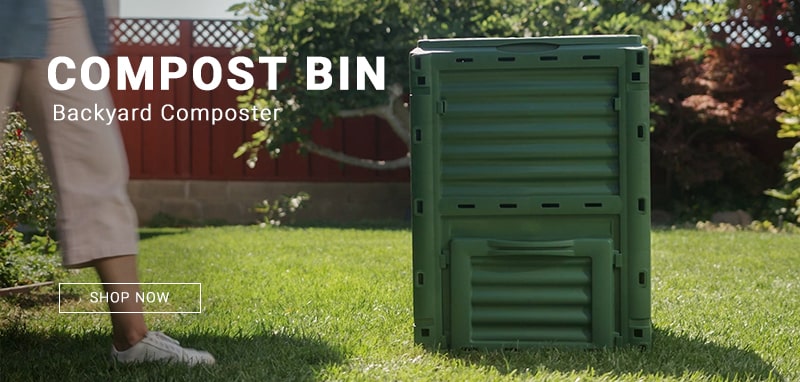Gardening does not start by growing a plant in the ground; it begins with the soil. And nutrients from the soil are not infinite as it gets depleted at the end of the growing season. You have to prepare the soil to grow healthy plants and ensure a great yield during harvest. This way, the plant roots could grow deep enough to soak up the nutrients.
Contents []
Adding compost and manure can help prepare the soil. Soil holds nutrients that are essential for plants to grow strong and healthy. Sine compost reduces the need for chemical fertilizers, many gardeners put a compost bin in their garden.
If you’ve been composting for months, then now’s a good time to make full use of the compost.
How to Prepare the Garden Soil for Planting
Rich soil isn’t just soil. It consists of microorganisms that work in harmony with beneficial garden critters to release the nutrients for the plants to absorb. Rich soil has the best texture for planting, not too dense that it chokes the life out of the plants and not too loose that it could not hold moisture well. Loose, well-draining rich soil allows plants to create more oxygen while keeping the roots stable.
So how do you prepare the garden soil for planting? One of the best ways to prepare soil for planting is to add compost and organic matter when the ground gets soft and warm enough during the early spring season.
Organic matter like compost and worm castings are teeming with essential nutrients for better plant growth. These nutrients include carbon and nitrogen. Apart from boosting the nutrient profile of the soil, compost also improves the soil texture. Here is a step by step guide on preparing the ground for planting:
Step 1: Clear the garden of garden debris

Rocks, twigs, fallen leaves, weeds, etc. have to go if you’re amending the soil. Use a spade to cut the sod into small squares or a rake to remove garden debris. The planting area should be clear of unwanted debris that could impede plant growth, including weeds and invasive plants. Weeds and invasive plants will compete for soil nutrients, and these could end up choking the life out of your garden. Pull these out by hand, making sure to get them by the roots.
Step 2: Loosen the soil

At the start of the growing season, the soil is hard and compact. You have to work the soil to loosen it and make the texture ideal for growing different crops. If you’re amending the soil for the first time, you need to loosen the soil with a hoe to a depth of 8 to 12 inches. The soil should be nice and crumbly so the plant roots won’t have any problem going deeper as they grow.
Step 3: Add compost

Once the soil is nice and loose, you can add organic matter like compost into the soil. Do this only when the soil is moist but not wet! Spread at least 2 to 3 inches of compost onto the soil. You can dig the compost into the soil or simply layer the compost on the ground without disturbing the soil, entirely up to you. We suggest that you work the compost into the soil if the soil quality is too poor. Once the compost has been added to the soil, you’re ready to start planting.
Amending the soil with chemical fertilizers will only boost certain soil nutrients. Compost remains the best material for preparing the soil. Organic matter supplies the soil with all the nutrients needed to support healthy plant growth! On top of that, compost improves the soil’s texture and structure. It also encourages better air circulation, better water absorption, and photosynthesis.
Thankfully, there’s no need to buy sacks of compost; you can make it at home with our trusted outdoor compost bin. Get one today and start making your own compost using bins or tumblers.





